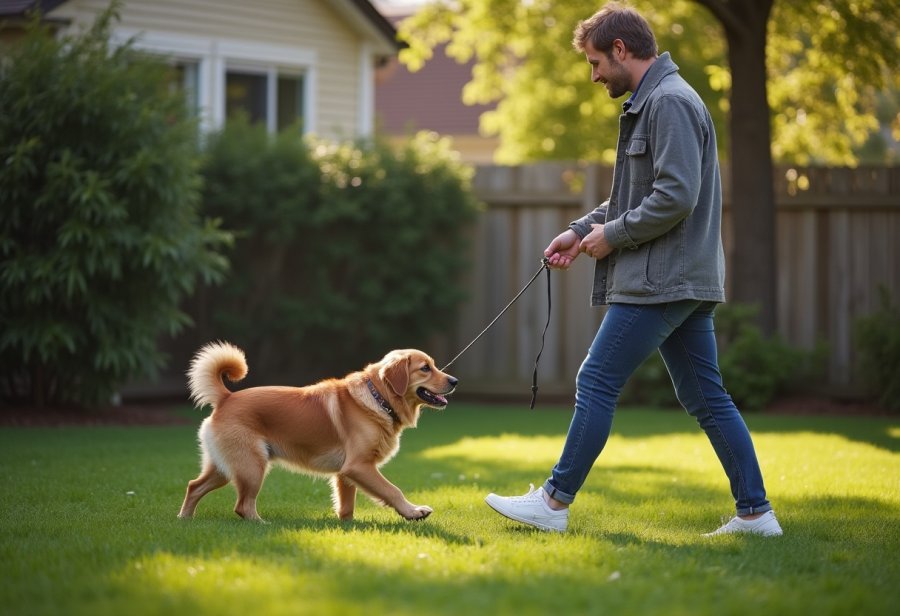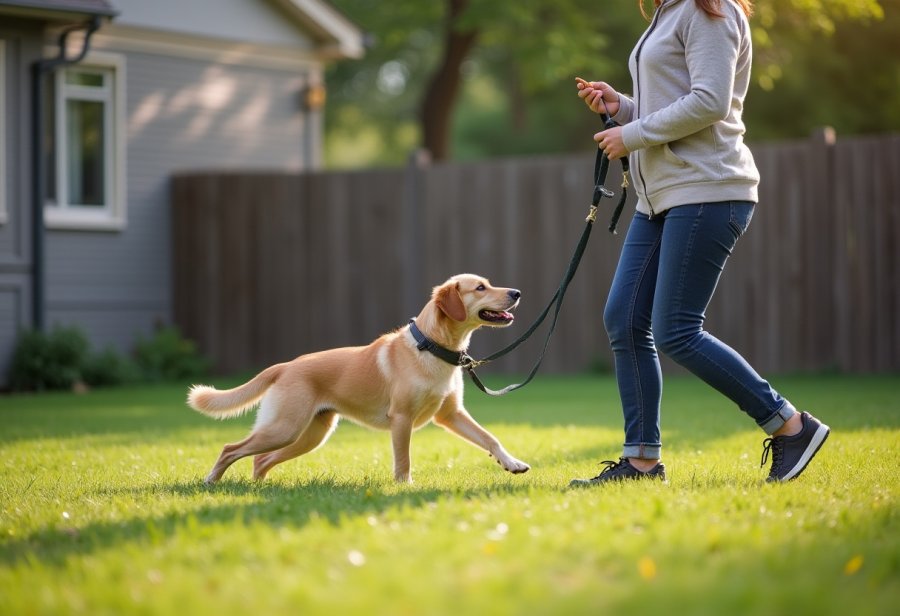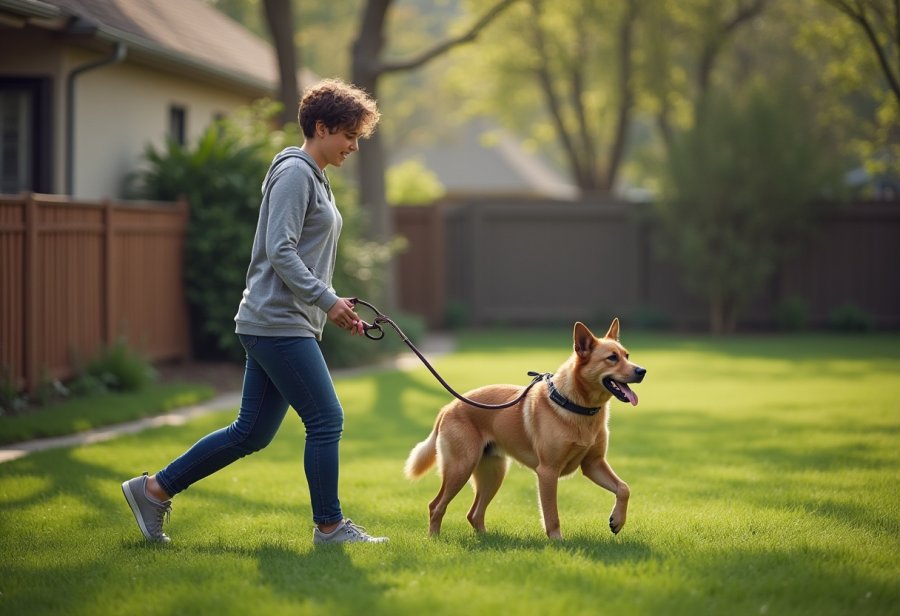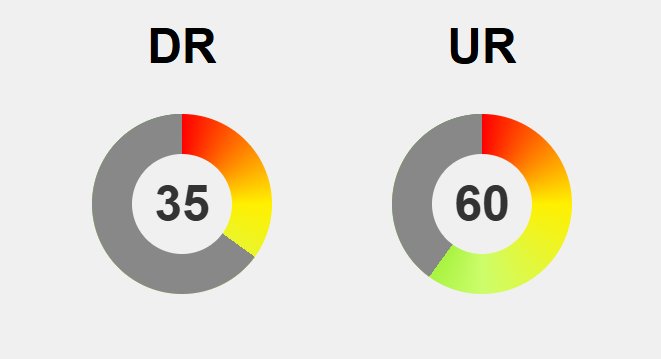Imagine transforming your daily walks from chaotic to calming, forging a deeper bond with your dog through the art of calm, focused leash walking. This guide reveals how patience, positive reinforcement, and consistency can turn a distracted or reactive pet into a composed companion. But what if your dog’s environment is full of distractions—loud noises, other animals, or busy streets? The journey to peaceful walks isn’t without setbacks, yet each challenge offers a chance to reinforce trust and understanding. Discover how mindful techniques, gentle guidance, and gradual exposure build impulse control, foster emotional resilience, and make training enjoyable rather than stressful. Can you envision a future where every outing is a shared moment of trust and tranquility? Unlock this potential by cultivating calmness, harnessing practical tools, and embracing patience—turning everyday walks into meaningful, bonding experiences that stand the test of time.

Transform Your Daily Routine with Calm Dog Walking
Walking calmly with your dog might seem straightforward, but it’s actually a skill that can transform your daily routines. When your dog learns to stay relaxed and focused during walks, what could be stressful or chaotic becomes a peaceful, bonding experience. Calm leash walking reduces pulling, lunging, and distractions, making outings safer and more enjoyable for both of you. It’s not just about obedience; it’s about building trust and clear communication, turning walks into moments of connection rather than chores.
A relaxed walk creates a positive environment where your dog feels secure and understood. When they aren’t reacting to every noise or squirrel, you gain better control and can truly enjoy your surroundings—or even share a quiet conversation. These peaceful outings strengthen your bond and foster mutual respect, making each walk something both of you look forward to.
Practicing calm leash walking also offers practical safety benefits. When your dog isn’t pulling or darting after distractions, the risk of accidents drops significantly. Over time, this training cultivates better impulse control and focus, which can positively influence other areas of your dog’s life. The confidence your dog gains from these calm walks helps foster a more balanced, confident pet and a harmonious relationship.
Whether you’re new to dog ownership or have years of experience, mastering this skill can elevate your routine. It turns everyday walks into shared moments of trust and calmness. By focusing on gentle guidance and positive reinforcement, you’re not just teaching your dog to walk nicely—you’re laying the foundation for a deeper bond and a more joyful life together.
Building Trust and Clear Communication Foundations
Understanding the core principles behind calm dog walking is essential for building a solid foundation in leash training. At its heart, this approach is about fostering trust and establishing clear communication between you and your dog. Consistent routines paired with positive associations—like treats or praise—help your dog feel secure and understand what’s expected during walks. When your dog learns that calm, focused walking brings rewards, they naturally choose relaxed behavior over reactive impulses.
Positive reinforcement plays a pivotal role here. Instead of punishing pulling or distraction, you reward moments when your dog walks calmly beside you. This creates a mental link that calmness and attentiveness are desirable behaviors, encouraging your dog to repeat them. Over time, these rewards nurture a cooperative, confident mindset rooted in trust rather than control.
The psychology behind effective leash training emphasizes that dogs respond best when they feel safe and understood. Maintaining a calm demeanor and consistent signals helps your dog mirror your emotional state. Building trust through gentle guidance makes walks shared, positive experiences rather than stressful challenges, strengthening your bond and making focus and relaxation more natural for your pet.
Training methods have shifted away from dominance and punishment toward kindness and patience. Modern techniques recognize that force breeds fear, which hampers progress. Instead, emphasizing gentle, positive interactions fosters a confident, well-adjusted dog eager to learn and cooperate. This emotional connection makes teaching calm leash walking easier and more sustainable.
Your dog’s emotional intelligence is crucial. Dogs are highly perceptive to your energy and cues. When you stay calm and consistent, they’re more likely to do the same. This mutual regulation creates a peaceful rhythm that supports relaxed leash walking, turning training into a shared journey of trust and understanding.
Incorporating these principles into your routine sets the stage for success. Patience, consistency, and positive reinforcement aren’t just training tools—they’re the foundation of a strong, trusting relationship. As your dog learns to stay calm and focused, walks become moments of bonding and mutual respect rather than chores or challenges, enriching both your lives.
Achieving Relaxed, Focused Walks Through Modern Techniques
Recent approaches to dog training focus on creating calm, mindful routines that promote relaxation and focus during walks. Trainers and owners are exploring techniques that move beyond traditional commands, integrating mindfulness exercises for both human and canine participants. Deep breathing, being fully present, and using calming tools like scents or music are proving effective in reducing anxiety and overstimulation. These methods foster patience and positive experiences, making peaceful leash routines more sustainable and enjoyable.
Many owners now see that establishing calmness involves emotional regulation as much as obedience. Introducing mental exercises such as brief pauses or relaxed sits helps dogs develop impulse control and maintain attention amid distractions. Combining these mental cues with gentle physical guidance builds resilience and confidence, encouraging a natural state of calmness that translates into relaxed walks. Technology, including training apps and GPS trackers, supports real-time reinforcement and desensitization, making these techniques more accessible.
Mindfulness practices are increasingly adopted by dog owners to deepen shared calmness. Simple routines like deep breathing or short mental breaks during walks help both owner and pet stay relaxed, transforming outings into moments of trust and connection rather than mere obedience exercises. While environmental triggers like loud noises or busy streets remain challenges, gradual exposure paired with consistent positive reinforcement helps dogs learn to stay composed in stimulating settings.
The emphasis on patience, emotional awareness, and kindness has made achieving relaxed, focused walks more achievable for many. These emerging ideas foster a peaceful, confident demeanor in dogs, turning daily walks into opportunities for bonding instead of battles for control. As these patterns continue evolving, more owners are finding success in creating joyful, calm leash routines that strengthen their relationship and promote mutual well-being.
For those interested in adopting these techniques, exploring resources such as this comprehensive guide on calm dog walking techniques can provide valuable insights. Incorporating these methods into daily routines helps reinforce a peaceful mindset for both owner and dog, making every walk a calming and bonding experience.

Implementing Calm Leash Training in Your Daily Life
To incorporate calm leash training into your daily routine, start with a consistent approach each time you head out the door. Use the same commands like “let’s go” or “heel,” so your dog knows what to expect. Keep initial walks short and positive, rewarding your dog whenever they walk beside you without pulling. Treats, praise, or gentle petting reinforce calm behavior and help establish good habits. As your dog becomes more confident, gradually increase the length and introduce mild distractions to challenge their focus.
Practical tools can make training smoother. A well-fitting harness or head collar provides better control and reduces pulling, making walks more comfortable for both of you. Keep treats handy and use a clicker if you like, marking moments when your dog stays calm and focused. Immediate praise and rewards strengthen the connection between their behavior and the positive outcome, encouraging them to repeat it. Remember to stay relaxed; your calm energy helps your dog stay composed.
When distractions appear, resist the urge to pull or get frustrated. Instead, pause, take a deep breath, and redirect your dog’s attention with a cue like “focus” or “look.” Reward their response generously to reinforce attention on you. If your dog pulls or reacts strongly, calmly walk in the opposite direction until they regain focus, then continue. Consistency and patience are key—progress may be slow at first, but steady practice pays off.
Incorporating short mental exercises during walks—like asking for a sit or a relaxed pause—builds impulse control and helps your dog stay calm amid stimuli. These small routines, paired with treats, gradually teach patience and attentiveness. Over time, your dog will learn to remain relaxed even in more stimulating environments, turning walks into shared moments of trust and tranquility.
Training is an ongoing process, and celebrating small wins keeps motivation high. Whether it’s walking a few steps without pulling or maintaining eye contact for a few seconds, each success reinforces calmness and focus. Keep routines consistent, stay positive, and remember that patience and persistence turn peaceful leash walks from an aspiration into a daily reality. This approach transforms walks into joyful, bonding experiences that strengthen your connection.
Affordable Strategies for Safe, Effective Training
Training your dog to walk calmly and focus during leash walks doesn’t have to be a costly endeavor. Starting with basic gear like a comfortable harness, a sturdy leash, and some tasty treats is affordable and effective. Investing in quality equipment can make a real difference in control and comfort, setting the stage for smoother training sessions. These initial expenses are manageable and provide a solid foundation for progress.
If you prefer professional guidance, obedience classes or a trainer can vary in price, but many options are budget-friendly. Choosing the right support can accelerate learning, especially when facing specific challenges. Online courses and training apps offer convenient, cost-effective alternatives, providing step-by-step routines and troubleshooting tips that you can follow from home.
Ongoing reinforcement costs are minimal but essential. Regular practice, occasional refresher sessions, or new treats help maintain your dog’s calmness over time. These small investments keep progress steady and ensure that your dog’s good behavior sticks. Remember, consistency in rewarding calm, focused walks is often more impactful than expensive gear.
The good news is that effective leash training doesn’t require a hefty budget. Many owners succeed using affordable tools paired with patience, positive reinforcement, and routine. Spending a little on quality equipment and support can pay off in safer outings, better behavior, and a stronger bond with your dog.
Think of training as an investment in safety and harmony. Proper gear, a bit of expert advice if needed, and regular reinforcement are all part of creating an environment where calm leash walking becomes second nature. The long-term benefits—more enjoyable walks and a confident, well-behaved dog—far outweigh the initial costs.
Systematic Approach to Consistent Leash Training
To approach leash training with clarity and consistency, start by establishing a clear routine for each walk. Use the same commands like “let’s go” or “heel” to set expectations, helping your dog understand what’s coming next. Keep initial sessions short and positive, rewarding your dog for walking calmly beside you without pulling. This builds a foundation of trust and makes each outing a pleasant experience. As your dog gains confidence, gradually extend the length of walks and introduce mild distractions, always reinforcing focus and calmness.
Creating a predictable routine is key. Begin in quiet environments such as your backyard or a calm park, where your dog can learn to stay attentive without feeling overwhelmed. When distractions appear, remain calm and redirect their attention with a cue like “focus” or “look,” then reward their response generously. Patience during this phase is essential; rushing or showing frustration can hinder progress and create confusion. Instead, stay relaxed and consistent, allowing your dog to learn at their own pace.
As your dog becomes more reliable, start adding new commands for stopping, turning, or changing pace. Reinforce these behaviors immediately with treats or praise to turn them into natural responses. Making responses predictable helps your dog feel secure and understand what’s expected, which in turn promotes calmness. Consistency from everyone involved—whether family members or other caregivers—ensures your dog receives clear, uniform signals, speeding up the learning process.
Regularly assess your dog’s progress and adjust training difficulty accordingly. If they struggle with a particular distraction or command, revisit earlier stages before moving forward. Keep your tone confident and relaxed, as your energy influences your dog’s emotional state. This flexibility keeps training effective and prevents setbacks from discouraging you. Remember, progress isn’t always linear; patience and persistence are your best tools.
Finally, incorporate small mental exercises during walks, such as asking for a sit or a pause, to boost impulse control and focus. Celebrating small successes—like walking a few steps without pulling—builds your dog’s confidence and keeps motivation high. Over time, these routines become second nature, transforming walks into peaceful, bonding moments that reinforce trust and mutual understanding. Consistency, patience, and positive reinforcement turn leash training into a rewarding journey for both of you.

Overcoming Challenges and Preventing Setbacks in Calm Walking
Training your dog to walk calmly isn’t without its setbacks. Distractions like other dogs, squirrels, loud noises, or unfamiliar environments can easily pull your dog’s focus away from you. When this happens, pulling, lunging, or reactive behaviors may surface, undoing progress and testing your patience. Recognizing these triggers early allows you to prepare and respond calmly rather than reacting with frustration, which can escalate the situation.
Leash pulling and overexcitement are common hurdles. If your dog pulls ahead or becomes distracted, pause, regain control, and gently redirect their attention with a cue like “focus” or “look.” Reward their response immediately to reinforce the desired behavior. Consistency in your reactions helps your dog understand what’s expected, reducing confusion and fostering better focus over time.
Anxiety in new or stimulating environments poses another challenge. Dogs can become overwhelmed, leading to heightened stress and reactive behaviors. Introducing these settings gradually, paired with plenty of positive reinforcement, builds your dog’s confidence and emotional resilience. Patience and a steady pace are key; pushing too hard too fast can cause setbacks and hinder progress.
To prevent setbacks, break training into manageable steps. If your dog struggles with a particular distraction, revisit earlier stages of training before moving forward. Stay relaxed and confident, as your emotional state influences your dog’s reactions. Flexibility and patience turn setbacks into opportunities for learning, rather than failures.
Incorporating small mental routines—like asking for a sit or a relaxed pause—can help your dog develop impulse control. Celebrate every small win, such as walking a few steps without pulling or maintaining eye contact. These incremental successes build your dog’s confidence and reinforce calm, focused behavior.
Remember, setbacks are part of the process. With consistent effort, patience, and a clear plan, challenges become stepping stones. This approach keeps your training positive and effective, ultimately leading to peaceful, trust-filled walks that strengthen your bond and set the stage for long-term success.






